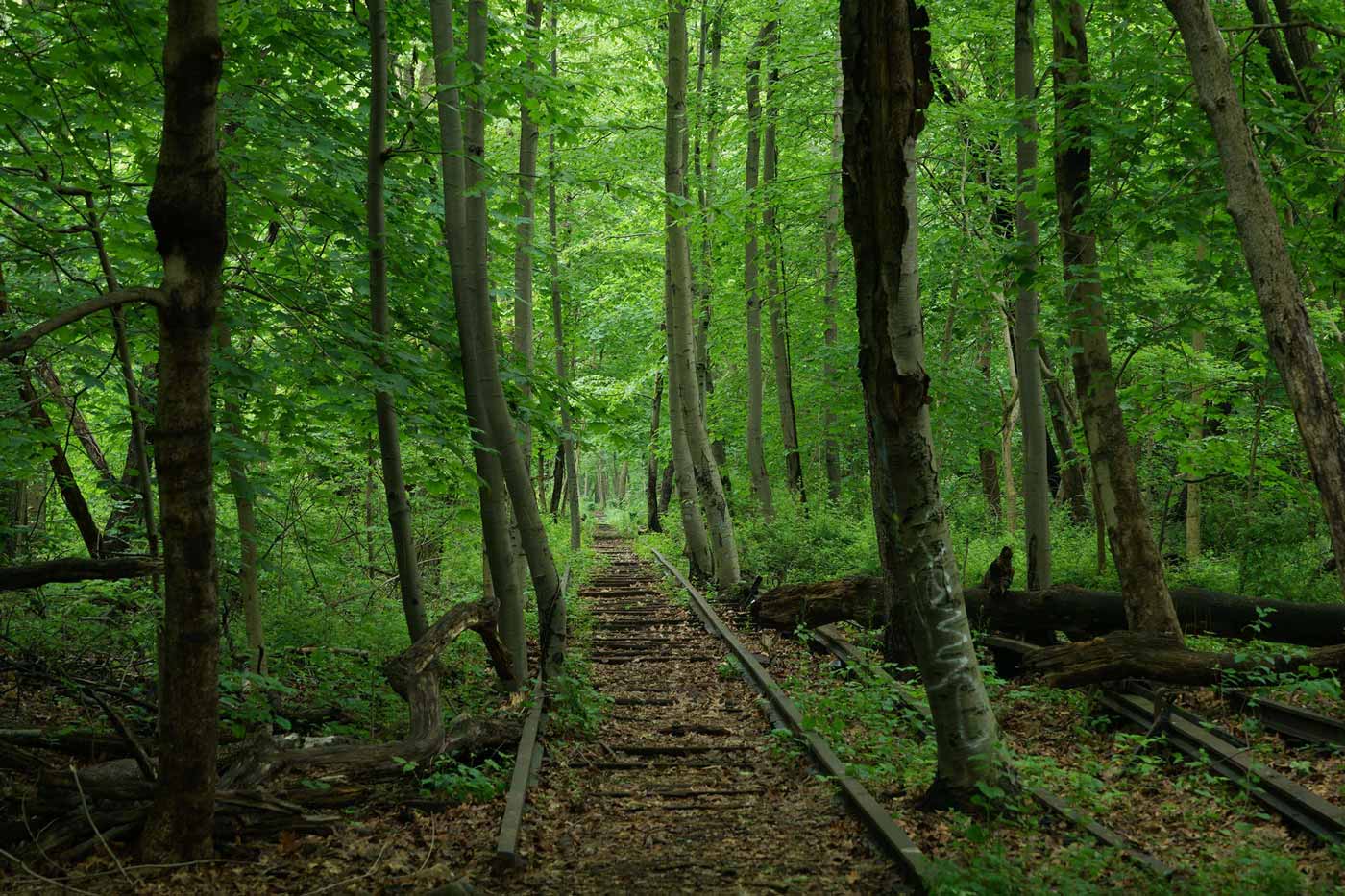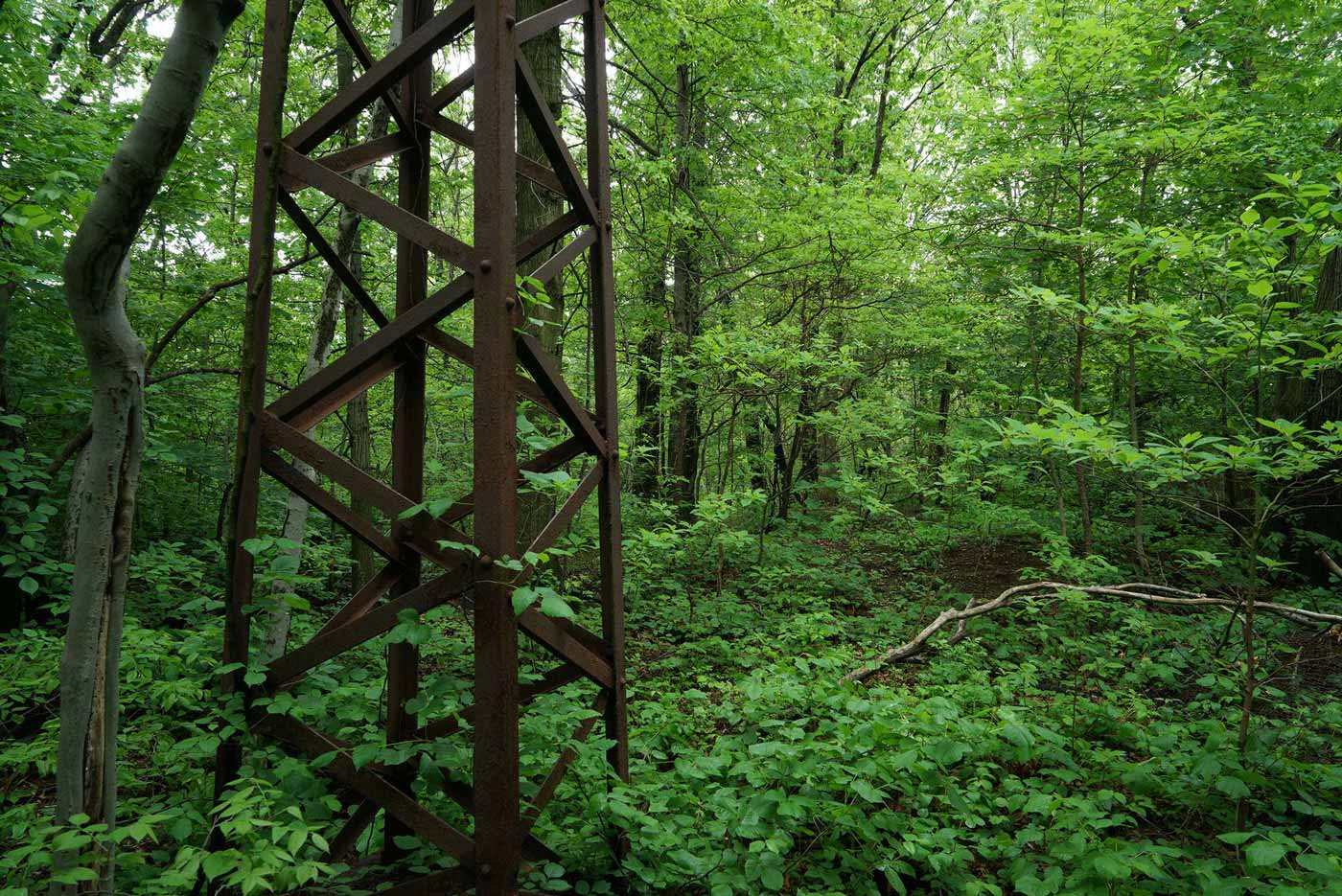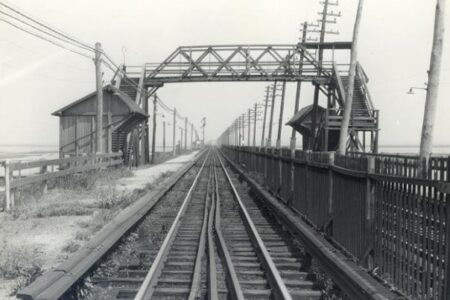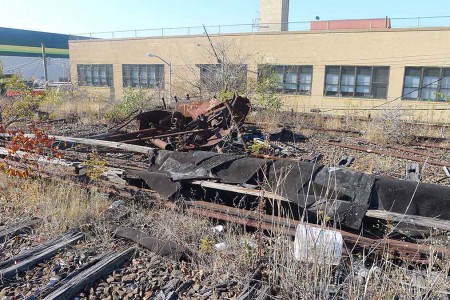About
In 2011, a group of residents living along the former LIRR Rockaway Beach Branch, teamed up to advocate for the conversion of the LIRR Rockaway Beach Branch into a new park. The Friends of the QueensWay (FQW), led by local residents, has been supported by hundreds of individuals and organizations via petition, fundraiser, cleanups, tours, and many other events & initiatives, all of whom have the goal of converting the long-abandoned property into a public park that can be enjoyed by bikers, walkers, joggers, visitors, tourists, workers and residents in Queens and the rest of the world. Also in 2011, FQW entered into a partnership with The Trust for Public Land, the nation’s leading nonprofit organization working to create parks and protect land for people. Since then, the two organizations have worked together to gather local input and support, and to develop a plan for the QueensWay. Since 1962, the 3.5 miles stretch of the LIRR Rockaway Beach Branch has been sitting desolate and been a blight on our communities. Like the Highline in Manhattan, the Atlanta Belt Line, and the 11th street bridge park in Washington, D.C., it is the intention of FQW and The Trust for Public Land to plan the reuse of this property in a way which not only creates an iconic park but also sparks economic and cultural development and improves the quality of life and environment of the communities living adjacent to the line.
“Investing in parkland is critical to the quality of life in Queens. The QueensWay project is an ambitious plan that has the potential to be the new gem of open space in the borough. The plan would provide sprawling public parkland and would be a treasured resource for local families, children and seniors, as well a boon for the environment and the Queens economy. I look forward to further progress resulting from the study in the weeks and months ahead. I applaud Friends of the QueensWay and the Trust for Public Land for their work in engaging community members each step of the way, and I know that they will continue to do so as the project moves forward.” —U.S. Rep. Grace Meng, (D) Queens
“Parks are too often neglected and QueensWay would offer more access to open space and parkland. Parks provide an economic benefit to local business, retail establishments and restaurants and people of all ages would be able to enjoy the recreational opportunities which this new green space would provide.” —Senator Toby Ann Stavisky, (D) Central Queens
“Having grown up near the long-abandoned railway and recognizing the potential it has to be a meaningful and substantive community resource, it is great to finally see a realistic proposal to do just that. The QueensWay Plan will provide our communities with a tremendous opportunity for investment into our local economy by showcasing our distinct neighborhoods, traditions and communities, all interconnected through a single, transformative, safe, family-friendly park. I look forward to continuing to work with the Friends of the QueensWay, the community, and my colleagues in government to make this plan a reality.” —New York State Assemblyman Andrew Hevesi
“For over 50 years this abandoned railway has deteriorated into a rusting, garbage strewn repository of urban blight. I applaud the QueensWay Plan for its vision of transforming this urban scar into a “green” destination. I look forward to working with community members and the Friends of Queensway in the development of parkland that will be enjoyed by Queens residents for generations to come.” —Council Member Karen Koslowitz, 29th District
“New Yorkers for Parks strongly supports the concept plan developed by the Trust for Public Land and its community partners for “Queensway,” a new linear park that would provide vitally needed parkland and park connections in underserved Queens communities, improving park equity and safe biking and walking opportunities with connections to transit. Queens deserves the same chance to turn an abandoned rail right of way that has been derelict for 60 years into a true community asset and a building block in NYC’s recovery, driven by our essential parks.” —Executive Director of New Yorkers for Parks, Adam Gansler
“The Queensway project would create more greenspace and biking space, improve ecology and wildlife, and help advance resiliency efforts. It will also enhance street safety for pedestrians and cyclists, as well as slash air pollution in communities that are systematically overburdened by the effects of climate change. That’s why we continue to support this project. We thank the Trust for Public Land for their leadership” —President of the New York League of Conservation Voters, Julie Tighe
“Completion of the 3-mile Queensway project would serve some of the most diverse neighborhoods in New York City and create badly needed pedestrian and bicycle connections to seven subway lines and a commuter rail line.” —President of Rails-to-Trails Conservancy, Ryan Chao
Executive Director of Transportation Alternatives Paul Steely White said: “The QueensWay will provide much-needed new open space for Queens residents. We thank the Trust for Public Land and Friends of the QueensWay for getting us to this point. A key to making the QueensWay a success will be safe connections to it for bicyclists and pedestrians. We look forward to working with Queens residents to realize the continued development of a robust network to make biking and walking Queens safer and more enjoyable.” “Our city’s open spaces are treasures that play an integral part in ensuring New York’s future is greener and greater. We are happy to support the development of the QueensWay project and believe it will benefit the cultural and economic vitality of the neighborhoods it touches.” —Ed Skyler, Citi’s Executive Vice President for Global Public Affairs and a former New York City Deputy Mayor
“It’s tremendous to see such an innovative and forward-looking project come to Queens. The QueensWay has the potential to transform a borough that is badly lacking in open space. The project wonderfully re-imagines how to use the borough’s existing infrastructure.” —Executive Director of the Center for Urban Future Jonathan Bowles
“On behalf of the Friends of the Highline, I would like to congratulate the Friends of the QueensWay and the Trust for Public Land for today’s announcement of the very thoughtful plans for the QueensWay. The conversion of abandoned rail corridors into parks can unlock a number of extraordinary benefits to the communities in which they exist. Completing a truly detailed plan driven by community interests such as the one announced today for the QueensWay is a major milestone on the path to success.” — Co-Founder of the Friends of the Highline Joshua David
The QueensWay project proposes to convert the former LIRR Rockaway Beach Branch (RBB) into a new, public park. Abandoned since 1962, the RBB used to run off the LIRR main line at Rego Park heading south via Ozone Park and across Jamaica Bay in the Rockaways. Construction of the line started in 1877 with service being initiated in various forms in the 1880s. Its full configuration between White Pot Junction and the Rockaway’s was not fully completed until the 1910s and 1920s After a series of track fires in the 1940s and 1950s on the trestles near Jamaica Bay, the cost of maintaining the service for the LIRR become infeasible. In 1955 & 1956, two major events occurred in the evolution of the RBB. First, the City of New York acquired the property and converted the southern section into subway track out to the Rockaways through Jamaica Bay where the A train currently runs today. Second, due to low ridership, the LIRR significantly reduced operations between Rego Park and Ozone Park. On June 8, 1962, service was forever discontinued on the line. Since its closure in 1962, there have been many attempts to reactive the RBB via rail but, in each case, studies have concluded reactivation to be infeasible for a variety of reasons including high capital costs; resulting delays in main line trains to and from Long Island and Penn Station; increased commuter costs; environmental impacts; and detrimental effects to residents, businesses and schools that currently exist along the RBB.
The Friends of the QueensWay is an organization consisting of thousands of people, mainly living in Queens, working in tandem with The Trust for Public Land, the nation’s leading creator of parks. This effort is currently being coordinated by a Steering Committee. The individuals on the Steering Committee include:
![]() Andrea Crawford has been a civic leader in Kew Gardens for 20 years. She served for six terms as the chair of Community Board 9 which covers a major portion of the QueensWay. Under her tenure as Chair, all of the four communities encompassed within CB9 underwent contextual zoning plans that will help secure the viability of these communities in the future. She has been a diligent supporter of Forest Park and its surrounding neighborhoods. Andrea has been recognized by State Proclamation as a Woman of Distinction. When not brandishing her Civic Activist Sword, Andrea is an attorney with the New York City Health and Hospital Corporation.
Andrea Crawford has been a civic leader in Kew Gardens for 20 years. She served for six terms as the chair of Community Board 9 which covers a major portion of the QueensWay. Under her tenure as Chair, all of the four communities encompassed within CB9 underwent contextual zoning plans that will help secure the viability of these communities in the future. She has been a diligent supporter of Forest Park and its surrounding neighborhoods. Andrea has been recognized by State Proclamation as a Woman of Distinction. When not brandishing her Civic Activist Sword, Andrea is an attorney with the New York City Health and Hospital Corporation.
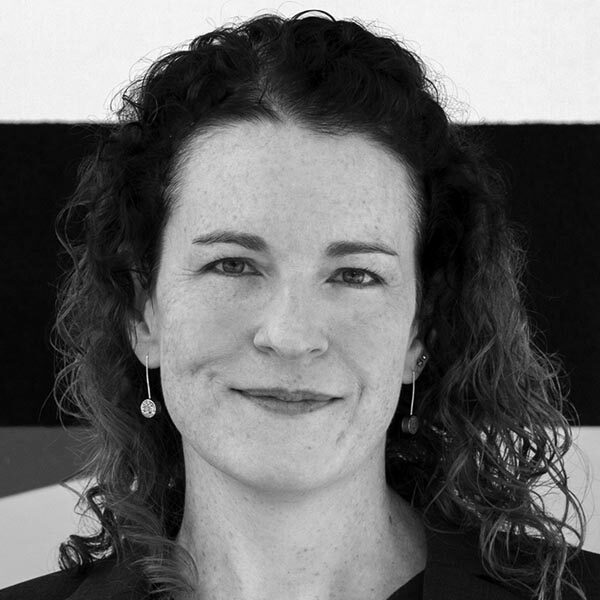 Anne Green is a 14-year resident of Richmond Hill, Queens, after relocating there from Forest Hills. She and her husband own a home that is one block from the proposed QueensWay route. Anne is a Principal / Managing Director at integrated communications agency, G&S Business Communications, and was previously President & Chief Executive Officer of CooperKatz & Company. She has been in the field of PR for over 25 years and started her career at Burson-Marsteller. She oversees the G&S New York Office and serves as a senior counselor to its clients. In addition to her work with the Friends of the QueensWay, Anne is Board Chair for Queens-based LifeWay Network, which combats human trafficking with safe housing and education, and a Board Director for the Alumnae/i Association of Vassar College.
Anne Green is a 14-year resident of Richmond Hill, Queens, after relocating there from Forest Hills. She and her husband own a home that is one block from the proposed QueensWay route. Anne is a Principal / Managing Director at integrated communications agency, G&S Business Communications, and was previously President & Chief Executive Officer of CooperKatz & Company. She has been in the field of PR for over 25 years and started her career at Burson-Marsteller. She oversees the G&S New York Office and serves as a senior counselor to its clients. In addition to her work with the Friends of the QueensWay, Anne is Board Chair for Queens-based LifeWay Network, which combats human trafficking with safe housing and education, and a Board Director for the Alumnae/i Association of Vassar College.
![]() Karen Imas, is the Waterfront Alliance’s Vice President of Programs overseeing programming, advocacy, and outreach to advance and build consensus around waterfront issues. She brings significant experience crafting public affairs strategies in the nonprofit, private, and public sectors. Previously Karen was managing director at Connelly McLaughlin & Woloz, a New York City-base government relations firm, where she led political advocacy and communications campaigns for a wide range of clients across industry sectors. Karen served as a public affairs officer at the Consulate General of Canada in New York where she was a liaison to New York City and New York State on bilateral political and economic issues. Karen also served as the director of communications and leadership training at the Council of State Governments Eastern Regional Conference, a forum that fosters exchange of best practices among state governments. Karen was recognized as one of the “40 Under 40 New York City Rising Stars” by City & State Magazine. She is active in civic life in her hometown of Forest Hills, Queens. Karen received a Bachelor of Science in journalism from Boston University and completed her Masters degree in international relations at Columbia University.
Karen Imas, is the Waterfront Alliance’s Vice President of Programs overseeing programming, advocacy, and outreach to advance and build consensus around waterfront issues. She brings significant experience crafting public affairs strategies in the nonprofit, private, and public sectors. Previously Karen was managing director at Connelly McLaughlin & Woloz, a New York City-base government relations firm, where she led political advocacy and communications campaigns for a wide range of clients across industry sectors. Karen served as a public affairs officer at the Consulate General of Canada in New York where she was a liaison to New York City and New York State on bilateral political and economic issues. Karen also served as the director of communications and leadership training at the Council of State Governments Eastern Regional Conference, a forum that fosters exchange of best practices among state governments. Karen was recognized as one of the “40 Under 40 New York City Rising Stars” by City & State Magazine. She is active in civic life in her hometown of Forest Hills, Queens. Karen received a Bachelor of Science in journalism from Boston University and completed her Masters degree in international relations at Columbia University.
 Greg Lavine, has over seventeen years of experience in government, political campaigns, community organizing, international work, and most recently in the private sector. Having served as a liaison to a governor, District Director to Congressmember Grace Meng, Chief of Staff to City Councilmember Karen Koslowitz, as well as time spent at the UN and abroad, Greg truly understands the nuances of government and its functions. Locally, he is a proud member of the Friends of Queensway Steering Committee and serves the Kew Gardens community as a trustee of Maple Grove Cemetery.
Greg Lavine, has over seventeen years of experience in government, political campaigns, community organizing, international work, and most recently in the private sector. Having served as a liaison to a governor, District Director to Congressmember Grace Meng, Chief of Staff to City Councilmember Karen Koslowitz, as well as time spent at the UN and abroad, Greg truly understands the nuances of government and its functions. Locally, he is a proud member of the Friends of Queensway Steering Committee and serves the Kew Gardens community as a trustee of Maple Grove Cemetery.
 Ruben Ramales Assoc. AIA, NOMA, is a native New Yorker raised in Woodhaven, Queens, who draws on his local experiences to guide his work—fostering partnerships, collaboration, and engagement. Ruben is a Senior Manager of Component Engagement with the American Institute of Architects, working across states to advance the impact and awareness of local AIA chapters. As the former Executive Director of the Queens Chapter of the American Institute of Architects (AIA Queens), Ruben holds a Bachelor of Architecture from the New York Institute of Technology. Ruben has led QueensWay community outreach and engagement formerly as an Outreach Coordinator with the Trust for Public Land, a project partner of Friends of the QueensWay. Currently, Ruben also serves on the boards of Woodhaven Cultural & Historical Society and Latimer House Museum. Ruben enjoys heading into Forest Park trails with his pit bull Lily when not partaking in professional or civic opportunities.
Ruben Ramales Assoc. AIA, NOMA, is a native New Yorker raised in Woodhaven, Queens, who draws on his local experiences to guide his work—fostering partnerships, collaboration, and engagement. Ruben is a Senior Manager of Component Engagement with the American Institute of Architects, working across states to advance the impact and awareness of local AIA chapters. As the former Executive Director of the Queens Chapter of the American Institute of Architects (AIA Queens), Ruben holds a Bachelor of Architecture from the New York Institute of Technology. Ruben has led QueensWay community outreach and engagement formerly as an Outreach Coordinator with the Trust for Public Land, a project partner of Friends of the QueensWay. Currently, Ruben also serves on the boards of Woodhaven Cultural & Historical Society and Latimer House Museum. Ruben enjoys heading into Forest Park trails with his pit bull Lily when not partaking in professional or civic opportunities.
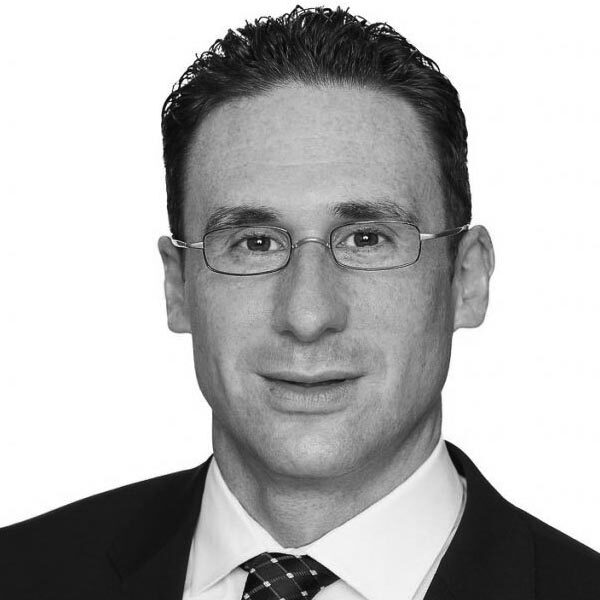 Travis Terry is the Founder and CEO of Immortal Strategies, a firm he founded in 2024 to help businesses, nonprofits and institutions navigate New York. For over 25 years, Travis has been at the forefront of change in New York City helping facilitate business transactions, public/private partnerships, economic incentive and complex land use deals. His projects have resulted in the creation or expansion of parks, buildings, museums, businesses, technologies and social programs. Travis sits on the Board of Directors for a number of nonprofits, lives in Forest Hills, Queens with his wife and three kids and is a passionate sports fan.
Travis Terry is the Founder and CEO of Immortal Strategies, a firm he founded in 2024 to help businesses, nonprofits and institutions navigate New York. For over 25 years, Travis has been at the forefront of change in New York City helping facilitate business transactions, public/private partnerships, economic incentive and complex land use deals. His projects have resulted in the creation or expansion of parks, buildings, museums, businesses, technologies and social programs. Travis sits on the Board of Directors for a number of nonprofits, lives in Forest Hills, Queens with his wife and three kids and is a passionate sports fan.
